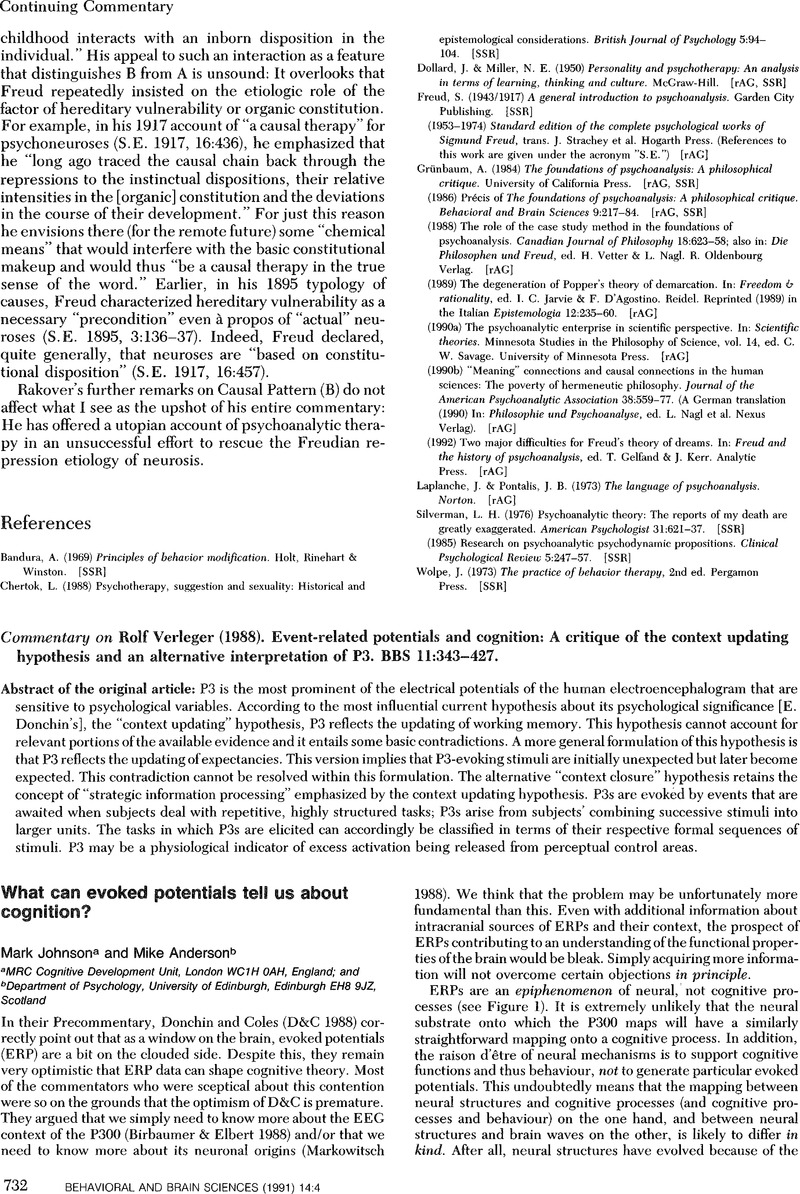Crossref Citations
This article has been cited by the following publications. This list is generated based on data provided by Crossref.
Coles, Michael G. H.
1995.
For Distinguished Contributions to Psychophysiology: Emanuel Donchin.
Psychophysiology,
Vol. 32,
Issue. 2,
p.
101.
CHUNG, GEOFFREY
TUCKER, DON M.
WEST, PAULA
POTTS, GEOFFREY F.
LIOTTI, MARIO
LUU, PHAN
and
HARTRY, ANN L.
1996.
Emotional expectancy: Brain electrical activity associated with an emotional bias in interpreting life events.
Psychophysiology,
Vol. 33,
Issue. 3,
p.
218.
DeSoto, M. Catherine
Fabiani, Monica
Geary, David C.
and
Gratton, Gabriele
2001.
When in Doubt, Do it Both Ways: Brain Evidence of the Simultaneous Activation of Conflicting Motor Responses in a Spatial Stroop Task.
Journal of Cognitive Neuroscience,
Vol. 13,
Issue. 4,
p.
523.
Miller, Gregory A.
2003.
For distinguished contributions to psychophysiology: Michael G. H. Coles.
Psychophysiology,
Vol. 40,
Issue. 6,
p.
833.
Näätänen, R.
Paavilainen, P.
Rinne, T.
and
Alho, K.
2007.
The mismatch negativity (MMN) in basic research of central auditory processing: A review.
Clinical Neurophysiology,
Vol. 118,
Issue. 12,
p.
2544.
Azevedo, Nancy
Atchley, Ruth Ann
and
Kehayia, Eva
2015.
Electrifying the lexical decision.
The Mental Lexicon,
Vol. 10,
Issue. 3,
p.
339.
Tucker, Don M
and
Luu, Phan
2023.
Adaptive control of functional connectivity: dorsal and ventral limbic divisions regulate the dorsal and ventral neocortical networks.
Cerebral Cortex,
Vol. 33,
Issue. 12,
p.
7870.


